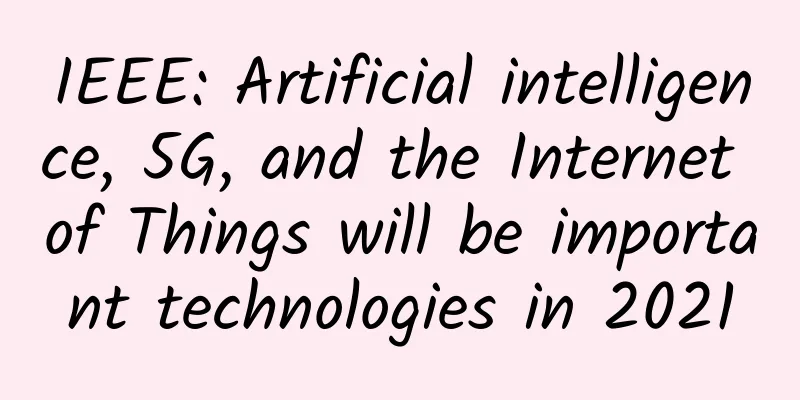5G and cybersecurity risks in 2023

|
The rollout of 5G networks has been alarmingly slow. As a concept, it was introduced in 2016, but it wasn’t available worldwide until 2019. Four years later, the number of people who own a 5G device is still low in most countries. It is uncertain whether the reason behind the slow adoption is affordability, lack of necessity, or the spread of serious misinformation about it. However, one understandable criticism leveled at 5G is the potential cybersecurity risks faced by users. The following guide will outline the 5G network security risks that users must be aware of in 2023 and how to protect against them. The potential of 5GWhen it comes to 5G networks, experts praise the advantages of high speed and low latency and all the use cases it can be applied to. Another significant advantage is that 5G consumes power more optimally than its predecessor and offers higher data capacity. All of these capabilities have the potential to enable IoT devices to connect at an unprecedented scale. This enables more households and consumers to use smart devices faster, allowing for more intelligent buildings such as smart homes, campuses, and cities. However, 5G networks are complex. They are designed to handle large amounts of different types of data and must therefore be managed using sophisticated software. Designers of 5G networks have recognized that the most effective way to automatically scale and appropriately handle 5G loads is through artificial intelligence and machine learning models. Unfortunately, this approach introduces new attack surfaces for bad actors. The attack surface of 5G networksThe complex software that manages 5G networks has the potential to become a blind spot in network security. It could be a major entry point for many bad actors. They could try to penetrate 5G's software to hijack and manipulate the network, though that's not the only vulnerability or type of attack that consumers and carriers should be concerned about. Because of the way 5G networks are built and operated, they are harder to secure than previous networks. They have more attack surfaces and can be exploited in the following ways: Data poisoningMachine learning algorithms allow computer systems to recognize patterns, enabling them to make autonomous decisions and predictions based on the information they are provided. The use of machine learning technology has been growing rapidly, and the industry's market size is expected to grow nearly tenfold over the next seven years. Most models are developed using example data (also known as training data), which can be "poisoned" by cyber criminals. Data poisoning is a form of adversarial machine learning where malicious actors attempt to force machine learning or AI systems to make mistakes. By introducing corrupted or inaccurate training data, they can create security blind spots that allow them to escape detection and fly under the radar. To prevent data poisoning in machine learning models, organizations can use outlier detection techniques including input validation, rate limiting, regression testing, manual tuning, and statistical techniques. Man-in-the-middle attacksOne of the biggest advantages of 5G frequencies is that they can pack in more bandwidth than previous standards. But that capability often comes at the expense of coverage, since data can travel shorter distances on 5G networks than on 4G or 3G networks. Network providers typically address this limitation by installing small cells and femtocells (nodes) at various locations within a single coverage area. This could be a lamp post or the side of a building, for example. Unfortunately, the installation of these nodes increases the amount of potential attack surface for malicious actors. If cybercriminals were to compromise any of these small units, they could perform what is known as a man-in-the-middle attack, allowing them to access network traffic and manipulate data movement. Unfortunately, many operators do not protect these devices, so they remain one of the biggest 5G network security risks in 2023. Network providers must encrypt these nodes and the data traffic that passes through them. This is the only reliable way to combat bad actors attempting to launch man-in-the-middle attacks. Exploiting connected device vulnerabilities With the influx of cheap IoT devices, many are not designed or manufactured with security in mind. We’ve already seen how low-end smart devices can expose consumers to cybersecurity threats, and they could also compromise 5G networks. As more people adopt IoT technology, it will create more entry points and make it more difficult to track the origin of threat vectors. Much of the responsibility to mitigate these types of attacks falls on the shoulders of consumers. Mitigating risks in 5G devicesTypically, device users tend to procrastinate when it comes to updating their device software. These updates often feature security updates that help manufacturers protect devices and patch against newly discovered vulnerabilities. Therefore, we strongly recommend that consumers ensure their 5G-connected devices are up to date. It is also a good idea to add an antivirus or firewall to your device’s security stack. Additionally, and more importantly, consumers are encouraged to buy from certified vendors, brands, and manufacturers. While they may be a bit expensive, this practice increases the likelihood that the device you choose is protected from the latest attacks. If you run a business that uses 5G, you must ensure that your internal network and the software that connects to it are secure. For example, local medical clinics, such as dental or optometry businesses, often rely on direct communication software to stay connected with patients, but they must ensure that the services they use will keep patient data confidential. One way dental practices can ensure patient and network security is by using dental software with security features such as encryption and multi-factor authentication. Essentially, users must view their devices as nodes in a 5G network. One compromised device could affect the entire network, so consumers need to stay informed and vigilant. in conclusionIt’s been nearly five years since 5G was released, but it’s still a relatively new technology for most people. The vast majority of the world’s population does not have 5G-capable devices, so it’s difficult to predict what vulnerabilities will emerge when 5G adoption reaches critical mass. That said, data poisoning, man-in-the-middle attacks, and exploiting vulnerabilities in connected devices are some of the ways malicious actors are targeting 5G networks. These potential threats should not deter consumers from taking advantage of the many benefits this technology offers. However, as a consumer or business user of 5G, you must always practice proper cybersecurity hygiene to ensure you are covered for any carrier blind spots. |
<<: Wi-Fi7 is here, should the access method of smart home appliances be unified?
>>: How to achieve lossless video transmission in any environment
Recommend
Factors that affect OSPF neighbor relationships, OSPF neighbor issues: network and subnet mask
1. OSPF troubleshooting: Multi-point access netwo...
Six pictures to help you evolve from HTTP/0.9 to HTTP3.0
[[422169]] One day, Xiaolin went to an interview ...
[Important Event] Be neither arrogant nor give up, stick to the original intention, the 2023 Jinrui Marketing Award works collection is officially launched
111.jpg The explosive marketing of the "frag...
Phicomm N1 (Tiantian Chain) flash YYF voice version
More than 2 years ago, I recorded the process of ...
Why 5G Private Networks Are Critical to Enterprise Digital Transformation
Today’s enterprise manufacturing facilities are u...
One can learn from others’ experience: How should the radio and television 5G core network be deployed?
In 2019, China Radio and Television, together wit...
A super simple TCP communication package in C#: step by step guide
Hey, fellow developers! Today we are going to tal...
LisaHost adds home broadband VPS with native US IP, optional AS9929 or 4837 lines
Recently, I have seen many friends looking for ho...
RAKsmart Bare Metal Cloud/Cloud Server/VPS 30% off, Dedicated Server Limited Flash Sale Starting from $30/month
Coinciding with the Chinese New Year, RAKsmart ha...
SDN/NFV/CLOUD is too complex and AI and 5G accelerate the reconstruction of the network
Just like decoration in life, during the decorati...
V.PS 10% off, US CN2 GIA/Hong Kong CMI/Japan IIJ & Softbank/Australia & UK AS9929 etc. available
V.PS is a cloud server site under xTOM, providing...
NIO implements chat room: everything starts with the basics of network programming!
1. Write at the beginning Hello everyone, I'm...
RTE2022 will open on November 1st. Agora releases the first professional book in the RTE industry, "Real-time Vientiane"
On October 27, the RTE 2022 Real-time Internet Co...
Entering the Third-Party Certification of IPv6 Technology
IPv6 certification assesses products, networks an...
5G new call concepts and key technologies
Labs Guide The pursuit of communication technolog...









